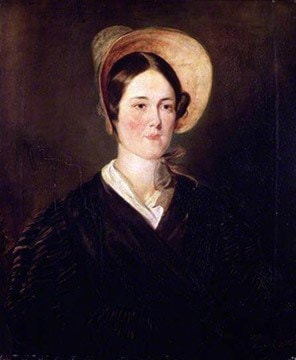With a quick farewell kiss and faithful collie Yarrow for companion Minnie began her race against time.
Awash, her lifeboats gone, a spider web of collapsed rigging a-spill over her sides, the San Francisco bark Coloma drifted before the southeasterly gale. Each 90-mile-an-hour gust jarred her to her keel, pounding the 850-ton ship beneath the waves and washing over the 10 terrified men clinging to the stump of mizzenmast.
Her master, Capt. J. Allison, had long given up hope. In that raging dawn of Dec. 6, 1906, when the sea and sky met in a ragged grey line, there was little chance that their tattered ensign flying upside down in the international distress signal would be spotted in the deadly reaches off Vancouver Island’s west coast.
Then, poking through the murk was an eerie yellow finger, Cape Beale light. Ten men eyed the slender tower hungrily, praying for some sign of recognition, of forthcoming salvation. There was no panic, just a desperate plea for a miracle. Then the old ship groaned as her bow grazed bottom...
Lightkeeper Tom Paterson was worried. He’d spent the night in the lantern room, 170 feet above the sea, drinking strong tea and chewing on his pipe. His eyes followed the red flash, then the white beacon as Cape Beale light stabbed outward 19 miles into the darkness. Above the banshee wailing of the wind he couldn’t even hear his own foghorn as the tower shivered under the onslaught of breakers booming in from 1,000 miles at sea to shake the very land.
As a timid dawn began to break at 3 a.m., wife Minnie brought him fresh tea. She, too, was restless. With their five children sleeping soundly below, the couple stared into the gloom, expecting they knew not what. Suddenly Tom rubbed his eyes and pointed: “Minnie, look! A dismasted ship!”
One thought sped through their minds. The derelict’s only chance was the lighthouse tender S.S. Quadra, sheltering in Bamfield Inlet, six miles away. But the telegraph was dead. So was the telephone. And Tom couldn’t leave his post.
Even as Minnie said, “I’ll go, Tom,” she was pulling on heavy clothing. His slippers would offer her better footing on the shoreline trail and she put them on. With a quick farewell kiss, she grabbed a lantern and with faithful collie Yarrow set out as Tom readied a lifeboat in case the Quadra couldn’t arrive in time.
The trail, just a series of blazes on trees supporting the telegraph line, was difficult to follow at best of times. In total darkness, at the height of a gale, it was hell. Pressed by urgency, Minnie moved as fast as she dared as rain, driven horizontally, blocked her vision and threatened to snuff out her small lantern. Every few feet, she had to feel her way about the severed telegraph wire that snaked across the path, almost tripping her.
Frightened and bewildered, Yarrow remained close as the trail became a succession of windfalls, ice-water traps and knee-deep mud. She pushed onward, over stumps and rocks and through thick underbrush to Bamfield Creek which, swelled by torrential rains, had washed out part of the trail. So she moved downstream, waded across and turning to the unbroken bush, cut cross-country.
Four hours after leaving the lighthouse, her clothing in rags, soaked through, bloodied, bruised and exhausted, she reached the Bamfield home of Mrs. James McKay, only to be told that Jim was out, trying to repair the telegraph line. Annie McKay suggested that they take their boat and warn the Quadra themselves.
By this time the storm was abating but heavy swells buffeted their rowboat and slowed their progress. Then they saw Quadra’s longboat coming toward them with Capt. Hackett and two seamen. As they neared, Minnie shouted, “Close in to Cape Beale there’s a ship coming ashore with the crew in the rigging. She’s not more than a mile from shore!”
As Hackett got his ship underway the women made their way back to the McKay home where Minnie declined an invitation to rest. Her baby needed her, she said, as she began retracing her steps homeward.
Thus alerted, the Quadra was able to rescue the Coloma’s crew. Ironically, because of poor visibility, neither Paterson was aware of the fact until a week later when the telegraph line was finally repaired.
Like the original Grace Darling of British lighthouse fame, Minnie Paterson captured the public’s imagination. The Canadian and American governments paid her homage and a public fund was organized to buy her a Christmas present as a more tangible award. Among the tributes, which included cash, jewelry and silver plate, were a new pair of slippers for Tom.
Unlike her British prototype, who rescued seamen in a gale, Minnie paid dearly for her courage.
She died after four years of poor health brought on by exposure and over-exertion. Husband Tom died on his way overseas with the army during the First World War. Annie McKay died at Bamfield in 1936.
A citation awarded Minnie Paterson by the Sailor’s Union of the Pacific reads in part: “...RESOLVED that we, the seamen of America, fully recognize her sterling worth as the highest type of womanhood, deeply appreciating her unselfish sacrifices in behalf of those ‘who go down to the sea in ships’ and assure her and hers of our undying gratitude.”
So: Is Minnie Paterson worthy of having her image on a Canadian banknote?
(NOTE: As much as I wish it were so I’m not aware of having any family relationship to Minnie Paterson.—TW)
